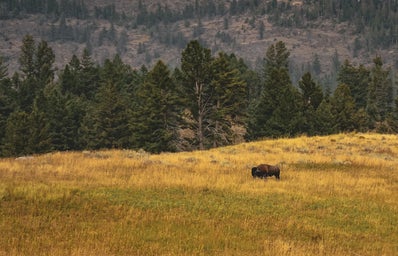History classes speak about indigenous peoples in past-tense–if they teach about them at all. Many Americans don’t make the effort to learn more about indigenous history and how colonization is still impacting indigenous people today.
The University of Colorado Boulder sits on land that was sacred to the Cheyenne, Arapaho, and Ute tribes. Land acknowledgments are common in email signatures or presentations at CU, but do the majority of us even know why this is significant? The Cheyenne tribe is still facing hardships and repercussions of colonization today, while legacies of white supremacy reap the benefits. And the majority of Coloradans are blissfully unaware.
But who were the Cheyenne tribe, and what do we need to learn about them in order to be supportive and amplify their historically silenced voices? Here is a brief introduction to the tribe, their historical oppression, and ways that non-indigenous people can broaden their understanding about indigenous history and learn how to be an ally today.
what is colonialism?
Colonialism is defined as the practice of a dominant culture establishing control over another culture. One of the clearest examples of this is white Europeans colonizing the Americas and establishing control over indigenous peoples. In this case, colonialism took place because of strong roots of white supremacy and the belief that Europeans were superior to Native Americans.
While many people think of war when they think of colonialism, this is not the only way that colonialism was seen historically. When Europeans colonized America, they engaged in structural violence in addition to physical battles in order to force indigenous people to submit to their viewpoints. In the United States and Canada, indigenous children were forced to attend residential schools where they were stripped of their culture and forced to comply with Western views and values. They were severely punished for breaking rules, and many died as a result of the abuse they faced.
who were the cheyenne tribe?
One indigenous tribe that used to live on the land that we now know as the state of Colorado is the Cheyenne tribe. Today, many people refer to the Cheyenne and Arapaho tribes as one tribe (“Cheyenne Arapaho”) but in reality, they were two different groups of people.
The Cheyenne people were very knowledgeable about botany, and used both the seasons and cultural protocols to determine which plants should be harvested and used. Three significant plants to the tribe were wild licorice, white sage, and wild red raspberries. The Cheyenne ate the licorice shoots and infused the leaves in tea as a remedy for an upset stomach. White sage was primarily used in religious ceremonies, and the leaves could be burned as incense. All parts of the raspberry could be used as food, medicine, and to aid women in childbirth.The Cheyenne tribe maintained relationships with animals as well. Buffalo were spiritually significant to the Cheyenne. One buffalo could provide 500 pounds of food, as well as fur for robes and tipi covers. There are also accounts of buffalo helping Cheyenne warriors during battle.
the sand creek massacre and forced relocation
The Cheyenne tribe historically resided in the territories we now know as Colorado, Nebraska, Wyoming, Oklahoma, Montana, and Texas. They split into the Northern and Southern tribes in 1825, and joined forces with other tribes to fight battles against the US army. Hundreds of Cheyenne people were killed in the Sand Creek Massacre, a deadly mass murder at the hands of US army soldiers.
The Sand Creek Massacre is referred to as one of the deadliest and most controversial events in American history. While many of the Cheyenne and Arapaho people were able to escape the initial attack, US soldiers followed women, children, and the elderly to their hiding place on a stream bed and shot them. After only eight hours, the army had killed around 230 of the Cheyenne and Arapaho.In the years following, Cheyenne people continued to be forced out of their homeland. The U.S. government forced the Cheyenne tribe to relocate to a reservation in Oklahoma, just a fraction of the land that the tribe used to reside on. A group of Cheyenne attempted to migrate back to their homelands in Montana in 1878. The majority of them were captured, imprisoned, and killed in Fort Robinson, Nebraska.
treaty rights
A treaty is a written agreement signed between two nations. Many treaties were signed in the 1800s as colonialism took over the United States with the intention to maintain indigenous sovereignty, but that is not what happened. In 1870, the Supreme Court ruled that Congress could overrule treaty provisions. The US frequently violated treaty rights with indigenous tribes, specifically by encroaching on what is supposed to be protected land.
The United States government signed a treaty with the Cheyenne and Arapaho tribes (who are today considered one tribe, even though they have different cultures and customs) on October 14, 1865. The US government required that the Cheyenne tribe would live on reservations, limiting them to small areas of land instead of the vast spaces they had lived on for years. The US additionally required that roads, highways, and other man-made structures could be established on former Cheyenne and Arapaho territory.
The US promised to pay compensation for loss of life and property during the Sand Creek Massacre. However, as previously stated, it was not uncommon for the US government to violate treaties with indigenous people or not follow through on their promises. Many indigenous people have not received this compensation.
the cheyenne tribe today
Although we might not see outright physical attacks on indigenous people today, many tribes are still harmed by structural violence and racial discrimination. Around the world, indigenous people make up 5% of the population, but make up 15% of the poorest people. Closer to home, Native Americans are the least represented racial and ethnic group at CU Boulder. Because of the United States’ attacks and discrimination in the past, current generations of indigenous people are still suffering the consequences.
However, the Cheyenne tribe is still flourishing today. The tribe has been taking several steps to sustain their sovereignty, including through constitutional reform. They also hold events to remember the horrible ways that their ancestors were treated. Every January, Cheyenne students run 400 miles from Fort Robinson, Nebraska to their reservation in Montana, in honor of their ancestors who attempted escape.
on-campus awareness
There are several things you can start doing right now to support the Cheyenne, Arapaho, and Ute tribes. First, when talking about the Cheyenne Arapaho residence hall, be sure to say the full name, and not abbreviate it to “Chey-Ho” out of respect for the tribe. Check out local organizations like the Boulder Healing Hub to learn more about how you can be an ally to indigenous people in Boulder. Finally, make the effort to learn more about indigenous history. Take courses on it on campus, or learn from books, articles, and documentaries. By understanding what happened in the past, we can prepare ourselves to help rebuilt in the present.
The simple truth is that we are on land that doesn’t belong to us. 87% of Boulder residents are white, and we hold a considerable amount of privilege compared to other races. It is our responsibility to use this privilege to help marginalized communities and spread awareness and support to indigenous people.


